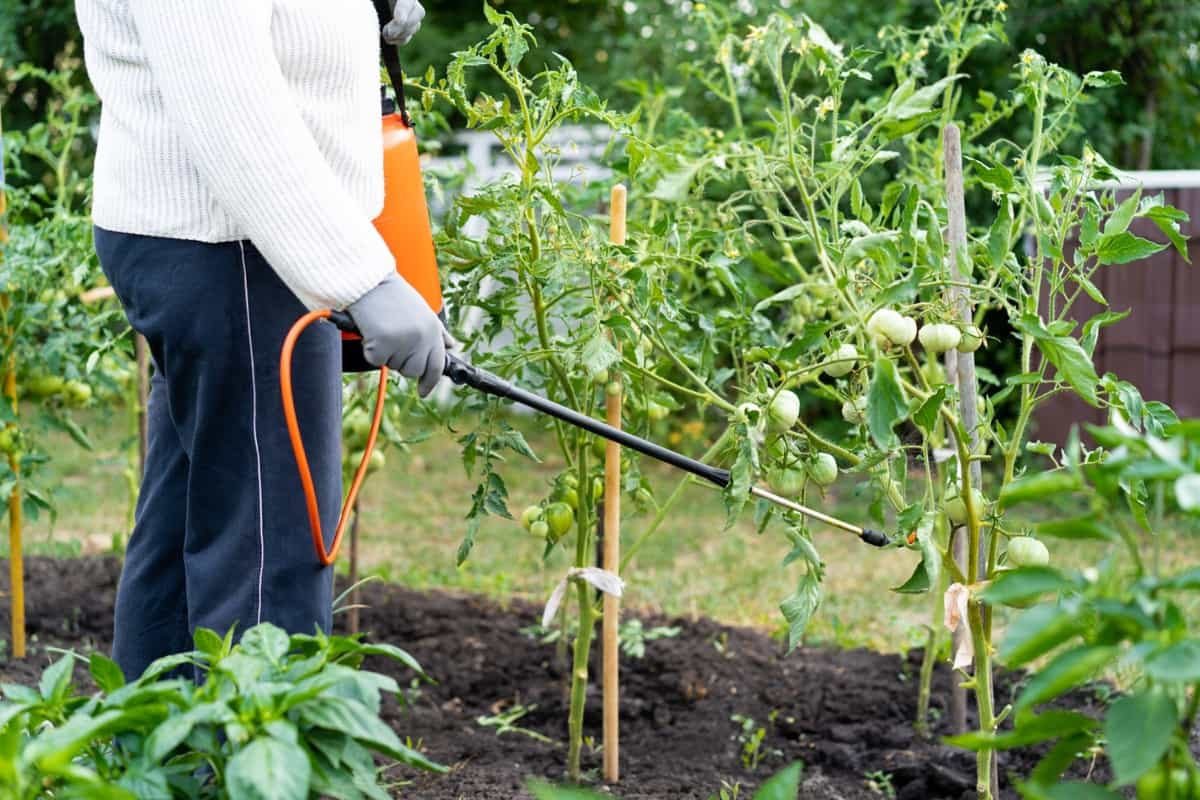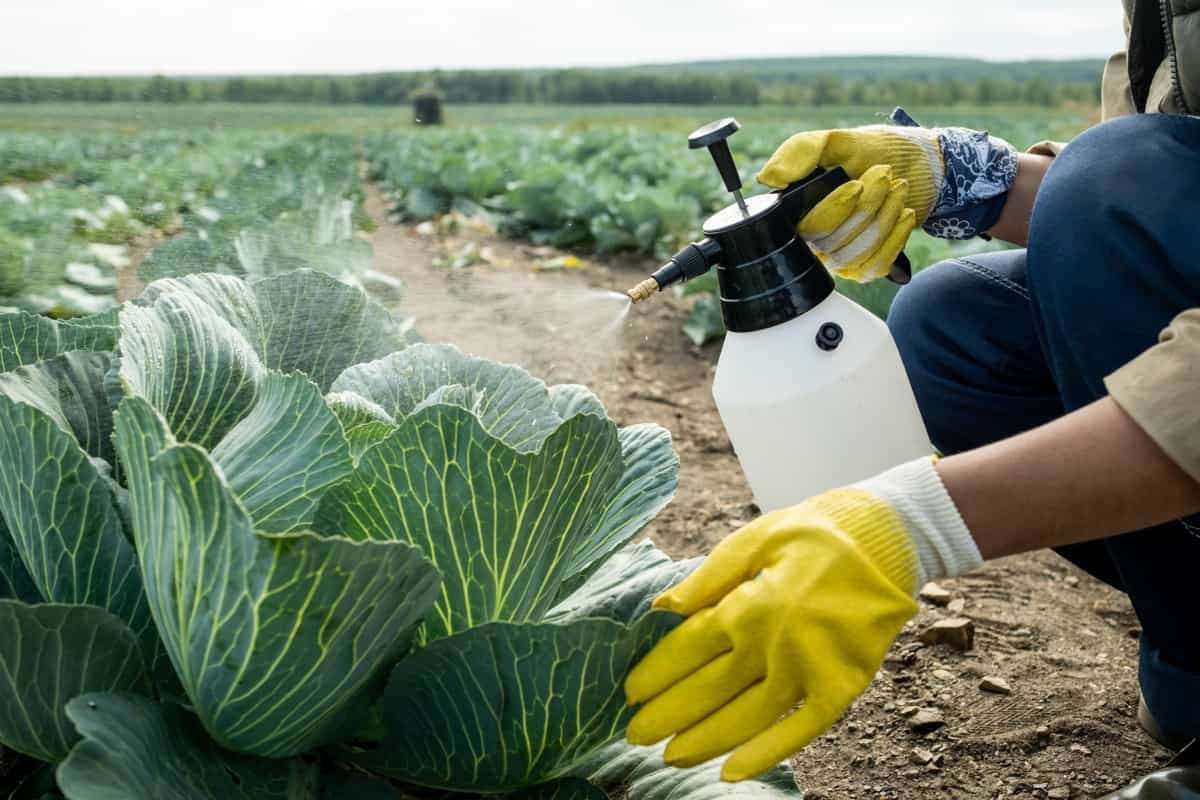Chilli Pepper Spray is a well-known remedy among gardeners for its incredible pest-repelling properties. The beauty of Homemade Chilli Pesticide for Plants is that it’s a natural, organic solution, offering an eco-friendly and cost-effective way to protect our gardens from pests and diseases. Its fiery kick deters a wide variety of plant-eating bugs without harming the plants themselves or beneficial insects like bees and ladybugs. Let’s dive deeper into understanding this potent, green warrior.

Homemade Chilli Pepper Spray for Pests and Disease
What is Chilli Pepper Spray?
Chilli Pepper Spray is a homemade pest and disease control solution made primarily from chilli peppers. This potent mix is used in home gardens and farms, offering a natural and organic solution to ward off harmful pests. The capsaicin in chillies, the compound that gives chillies their characteristic spiciness, is a deterrent for many pests. When these pests come into contact with the chilli spray, it irritates them, effectively deterring them from your plants.
What Are the Ingredients Needed to Make Chilli Pepper Spray?
To create a Chilli Pepper Spray, the key element lies in utilizing chilli peppers, which serve as the primary ingredient. Optimal results can be achieved by incorporating approximately half a cup of the spiciest chillies available. The remaining constituents consist of water, liquid soap, and Neem Oil. Neem oil, derived from the Neem tree, is potent as a fungicide and insecticide, making it an ideal complement to chilli peppers within our recipe. Furthermore, the inclusion of liquid soap aids in the adherence of the spray to plants, thereby heightening its overall efficacy.
Recipe/Prepare Chilli Pepper Spray at Home
- Start by chopping the chillies. You’ll want to use gloves while handling them to avoid any accidental exposure to the eyes or skin.
- Add the chopped chillies to two cups of water in a pan.
- Boil the mixture for about 20 minutes, which will help to extract the capsaicin.
- Allow the solution to cool before straining out the chilli pieces.
- Add a teaspoon of liquid soap and two teaspoons of Neem oil to the chilli-infused water.
- Stir the mixture well until everything is fully incorporated.
How Does Chilli Pepper Spray Work?
The Best Chilli Insecticide for Plants uses capsaicin in the chilli peppers to deter pests. Capsaicin irritates many pests, causing discomfort and driving them away from your plants. Neem oil complements the chilli by offering its insecticidal and fungicidal properties, killing many pests on contact or disrupting their feeding and breeding habits. The liquid soap, meanwhile, helps the mixture adhere to the plant surfaces, ensuring the spray’s longevity and efficacy.
What Pests and Diseases Can Chilli Pepper Spray Control?
Chilli Pepper Spray is effective against many pests, including aphids, spider mites, whiteflies, beetles, and leafhoppers. Besides its insect-repelling abilities, the Neem oil in the mixture also helps combat various fungal diseases like powdery mildew and black spots, enhancing your plants’ overall health and vitality.
| Pests and Diseases | Controlled by Chilli Pepper Spray? |
| Aphids | Yes |
| Spider Mites | Yes |
| Whiteflies | Yes |
| Beetles | Yes |
| Leafhoppers | Yes |
| Powdery Mildew | Yes |
| Black Spots | Yes |
In case you missed it: Organic King Chilli Farming: A Comprehensive Cultivation Guide

How to Store Chilli Pepper Spray?
Store your Chilli Pepper Spray in a cool, dry location, preferably away from direct sunlight. Storing it in a glass container is best, as capsaicin can degrade some plastics over time. Always ensure the container is tightly sealed to prevent the spray’s loss of potency.
How Often Should You Use Chilli Pepper Spray for Your Plants
Chilli Pepper Spray is a proactive approach rather than a solution, emphasizing the importance of consistent usage. To effectively prevent pests, it is recommended to apply the spray on a weekly basis. Nevertheless, find yourself dealing with an existing pest infestation. It may be necessary to increase the frequency of application, spraying every few days until the issue is effectively managed.
Best Time to Apply and How Much Chilli Pepper Spray Should You Use For Your Garden Plants
The best time to apply Chilli Pepper Spray is early morning or late evening when the sun is not at its peak. Applying it during cooler parts of the day reduces the risk of sunburn to your plants. When it comes to the amount of spray, a light, even coating on the leaves and stems of your plants should suffice. The key is to cover all plant surfaces where pests may hide.
How Long Does It Take for Chilli Pepper Spray to Work for Your Plants?
The effectiveness of Chilli Pepper Spray can often be seen immediately, especially with visible pests such as aphids and beetles. The pests may be irritated and leave the plants shortly after application. However, some pests, particularly those more resilient or hidden within the plant, may require several applications over a few days or weeks.
Benefits of Plants of Using Chilli Pepper Spray in the Home Garden
Using Chilli Pepper Spray in your home garden has numerous benefits. It’s an eco-friendly, organic alternative to chemical pesticides, reducing the risk of chemical buildup in your soil. This homemade solution is also cost-effective and easy to prepare, saving time and money. Most importantly, it’s a potent and effective method of controlling various pests and diseases, helping your plants thrive.
Safety Precautions When Using Chilli Pepper Spray
While Chilli Pepper Spray is natural and environmentally friendly, it’s still potent and requires careful handling. Always wear gloves and eye protection when preparing and applying the spray. It can irritate your skin and eyes, and ingestion can be harmful. Keeping the spray out of reach of children and pets is also crucial. Lastly, remember to spray your plants carefully, avoiding windy days to prevent the spray from drifting into your eyes or onto other people.
Application of Chilli Pepper Spray
Once your Chilli Pepper Spray is ready, it’s time for application. Transfer the blend to a spray container for convenient application. Always test a small area of your plants first to ensure no adverse reaction. If all seems well after 24 hours, proceed to spray the rest of the plant. Focus on areas where pests are known to gather, including the undersides of leaves. Reapply the spray every few days or after heavy rainfall until you notice a decline in pests. With this simple step, you’re heading to a healthier, pest-free garden using your Homemade Chilli Pesticide for Plants.
In case you missed it: Homemade DIY Baking Soda Solution for Pests and Disease Control: Recipe for Natural and Organic Benefits of Plants

Conclusion
Chilli Pepper Spray provides a powerful, natural pest and disease control solution in our gardens. With simple ingredients like chili peppers, water, liquid soap, and Neem oil, this homemade remedy effectively deters a broad spectrum of pests while combating several fungal diseases. It is cost-effective, eco-friendly, and easy to prepare, making it a worthy addition to any gardener’s toolkit.
However, proper application, storage, and safety practices are key to its successful use. While it offers numerous benefits to our plants, we must handle it cautiously to avoid potential harm to ourselves and others. Utilizing Chilli Pepper Spray is a step towards healthier plants and a more sustainable and organic gardening approach.
- Feed Your Flock for Less: Top 10 Tips to Save on Chicken Feed
- Ultimate Guide to Ossabaw Island Hog: Breeding, Raising, Diet, and Care
- Hatching Answers: The Top 10 Reasons Your Chickens Aren’t Laying Eggs
- Eggs and Economics: Breaking Down the Cost of Raising Backyard Chickens
- Defend Your Greens: Proven Methods to Keep Iguanas Out of Your Garden
- Ultimate Guide to Cinnamon Queen Chicken: A Comprehensive Guide for Beginners
- Ultimate Guide to California Tan Chicken: Breeding, Raising, Diet, Egg-Production and Care
- Ultimate Guide to Marsh Daisy Chicken: Breeding, Raising, Diet, and Care
- 10 Types of Chicken Farming Businesses You Can Start for Profits